

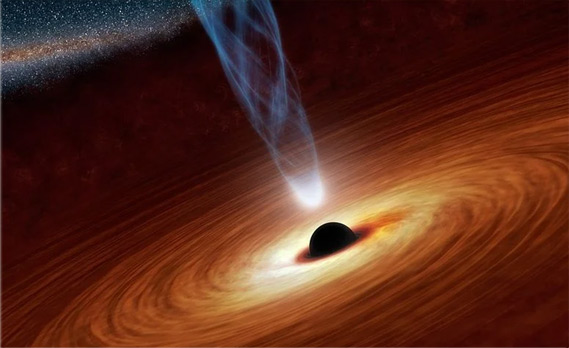
Black holes are the strangest objects in the Universe. A Black hole does not have a surface, like a planet or a star. Instead, it is a region of space where matter has collapsed in on itself. This catastrophic collapse results in a huge amount of mass being concentrated in an incredibly small area. The gravitational pull of this region is so great that nothing can escape- not even light. Although black holes cannot be seen, we know they exist from the way they affect nearby dust, stars, and galaxies. many of them are surrounded by discs of material. As the discs swirl around them like a whirlpool, they become extremely hot and give off X-rays.
Black holes come in many different sizes. many of them are only a few times more massive than the Sun. These 'stellar-mass' black holes form when a heavyweight star, about 10 times heavier than the sun, ends its life in a supernova explosion. What is left of the star -still several solar masses - collapses into an area only a few kilometers across.
Most galaxies, including the Milky Way, have supermassive black holes at their centers. These may be millions or billions of times heavier than our Sun. Supermassive Black holes also power active galaxies and ancient galaxies known as Quasars maybe hundreds of times brighter than even the largest ordinary galaxies.
Objects fall into Black holes are stretched to breaking point. An astronaut who ventures too close could be sucked into a Black hole and be pulled apart by the overpowering gravity.
A constant staple of sci-fi thrillers, black holes are violent, vastly destructive, and invisible.
Black holes are regions of space in which the force of gravity is so powerful that everything around is drawn in. Not even light can escape, which is why we can’t see any of this going on. Experts think there could be up to 100 million black holes in our galaxy alone, and these monsters can grow to become billions of times more massive than the sun. What’s more, at the center of most galaxies, including our own, lurks a supermassive black hole.
But we don’t know what happens when objects pass through the center. They might become ‘spaghettified’: stretched apart into long strings of matter; they could even be transported through a short-cut to a different part of our universe. Spooky.
Black holes can be big and small. Scientists think the smallest black holes are small as just one atom. These black holes are very tiny but have the mass of a large mountain. (Mass is the amount of matter or "stuff" in an object)
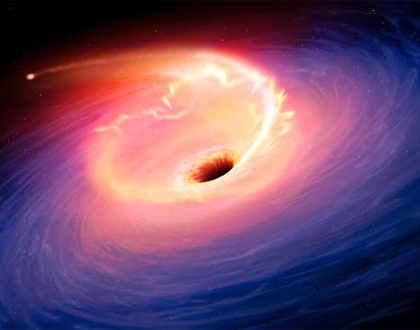
Another kind of Black hole is called "Stellar". Its mass can be up to 20 times more than the mass of the Sun. There may be many Stellar-mass black holes in Earth's galaxy. Earth's galaxy is called the Milky Way.
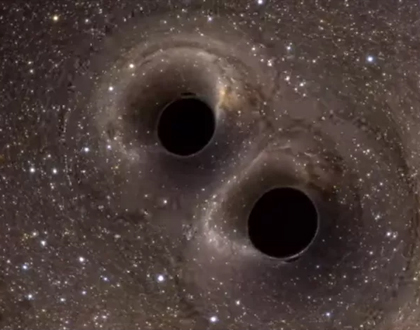
The Supermassive black hole at the center of the Milky Way is called the Sagittarius A. It has a mass equal to about 4 million Suns and would fit inside a very large ball that could hold a few million Earth's.
The largest black holes are called "Supermassive". These black holes have masses that are more than 1 million Suns together. Scientists have found proof that every large galaxy contains a Supermassive black hole at its center.
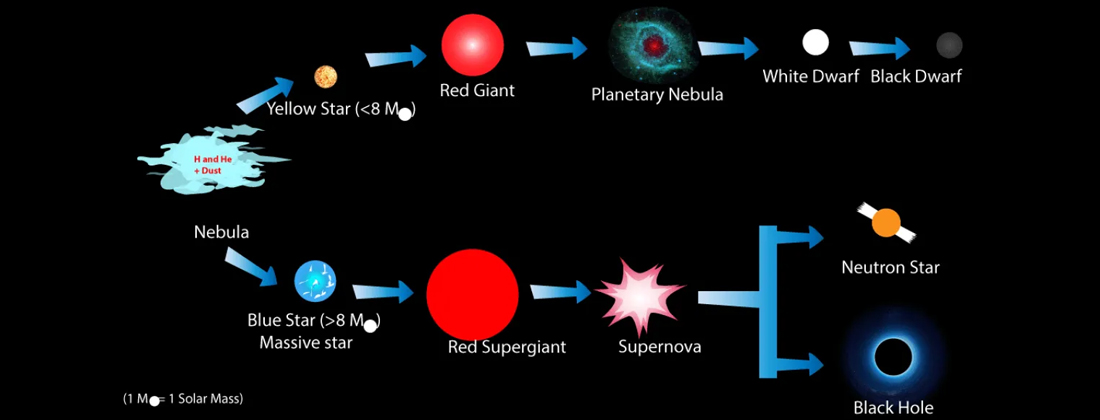
Scientists think the smallest black holes formed when the Universe began. Stellar black holes are made when the center of a very big star falls in upon itself or collapses. When this happens, it causes a supernova. A supernova is an exploding star that blasts part of the star into space.
Scientists think supermassive black holes were made at the same time as the galaxy they are in.
A black hole cannot be seen because strong gravity pulls all of the light into the middle of the black hole. But scientists can see how the strong gravity affects the stars and gas around the black hole. Scientists can study stars to find out if they are flying around or orbiting a black hole.
From <https://www.nasa.gov/audience/forstudents/k-4/stories/nasa-knows/what-is-a-black-hole-k4.html>
Perhaps the most prevalent myth about black hole is that they 'suck' matters towards them, like literally powerful vacuum cleaners. Don't worry!, they are not going to eventually consume everything in the universe and you don't need to be afraid of them...... unless you plan traveling VERY close.
Why? Well, even though black holes are extreme in many ways, they don't have infinite mass - and it's mass that determines the force of their gravity. The stellar black holes- have about the amount of mass that very massive stars do. So just as objects can orbit massive stars without falling in, the same is true for black holes.
Once you get close enough, the story is different, and gravity will guide you in. But that's the same as any massive object, like planet or star. When a black hole and a star are close together, high energy light is made. This kind of light cannot be seen with human eyes. Scientists use satellites and telescope is space to see the high-energy light.
More Myths: https://www.science.org.au/curious/space-time/black-holes
Learn more: https://science.nasa.gov/astrophysics/focus-areas/black-holes
Our cohesive learning program anchored in SPIRIT OF INQUIRY is an amalgam content, activities, and best practices of national and international curriculums. Our STEAM programs are driven to achieve two facets: STEAM educational attainment from Junior through Senior School and academic readiness to a prospective career choice. We provide hands-on educational experiences that empower students, igniting their creativity to find innovative solutions.
Know more About Us: https://www.vsskochi.in
Your Likes, Shares, Forwards & Comments would inspire / motivate our students
LIKE US :
SHARE US :
JOIN US :

Columbus Discovery And Lief Erickson The Viking Explorer Who Beat Columbus to America Nearly 500 years before the...
Read more
Thomas Edison Invention & Joseph Swan Who deserves the credit? Thomas Alva Edison The inve...
Read more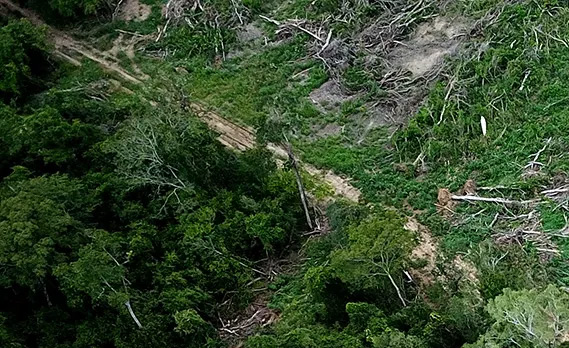
Deforestation and its impact on our planet Forests are essential to our future. More than 1.6 billion people depen...
Read moreMY TREE - MY PLANET, is an exclusive campaign by Vikram Sarabhai School-Kochi. Mother nature too needs care and pr...
Read more
Terms of use | Privacy Policy | Contact us
©2025 VSS. All Rights Reserved
Designed & Developed by websoultechserve.com